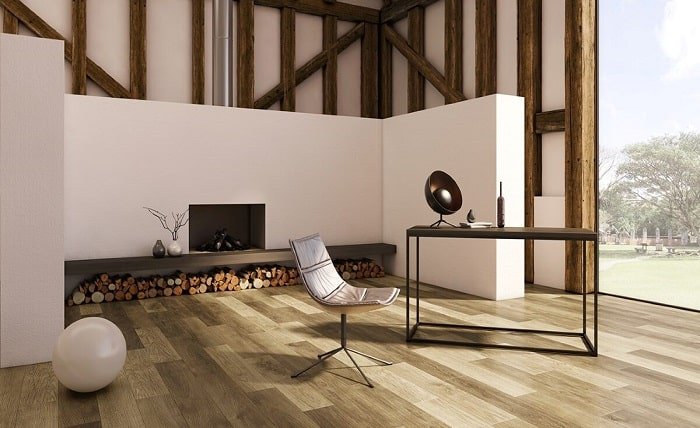Flooring choices contribute significantly to a space’s overall atmosphere. The right combination can reflect the room’s tone and support the style without overwhelming it. Every design theme comes with its own palette, texture, and visual expectations, which makes coordination essential when making interior decisions.
Well-known flooring companies like select surfaces offer a practical look at several flooring styles suited for different design themes. Seeing how certain options pair with different layouts or lighting can make it easier to picture what works best for each room. This kind of guidance helps bring together the technical side of flooring with the creative direction of home design.
Incorporating Natural Textures into Rustic Interiors
A rustic theme emphasizes comfort, character, and the appeal of nature indoors. Floors that showcase the beauty of wood grain or subtle imperfections naturally enhance this style. Wood-toned materials with a tactile surface create a space that feels lived-in and relaxed, especially when complemented by soft earth colors and simple decor pieces.
To match this style, matte or textured finishes in warm tones contribute to a sense of calm and groundedness. These tones offer warmth that works well in both open and intimate spaces. Choose plank patterns or slightly uneven tones to bring out the charm of rustic simplicity.
Creating Seamless Style in Modern Spaces
Modern interiors focus on minimal elements, open space, and crisp details. In these environments, flooring acts as a subtle structure that supports clean layouts and functional pieces. Smooth textures, clean edges, and large tile formats suit this look without adding extra visual noise.
When building a modern space, select floorings with consistent tones, such as light gray, charcoal, or soft beige. A matte finish can keep the space feeling balanced and spacious. Instead of multiple textures, staying within a tight range of materials helps maintain a cohesive and clear design language.
Complementing Traditional Decor with Classic Tones
Traditional themes include timeless details, balanced symmetry, and often rich finishes. Floors that echo those elements work beautifully when they feature defined grains and warm wood colors. These spaces welcome mid-to-deep tones that blend well with carved furnishings and classic accents.
Patterns such as herringbone or simple borders can contribute to the visual appeal without distracting from the room’s main features. Surfaces with a polished or smooth feel give the space a grounded, composed character. In rooms that emphasize formality or structure, thoughtful flooring patterns enhance the layout naturally.
Highlighting Coastal Themes with Bright Flooring
Coastal-style interiors embrace light, air, and a relaxed tone that reflects a connection to nature. Floors in this setting are usually soft in color and offer a breezy feeling underfoot. Pale woods, white tones, and sandy hues add to the refreshing, open nature of this coastal theme.
Some unique characteristics that suit this style include:
- Washed wood finishes that reflect sunlight softly
- Low-sheen textures that feel casual
- Pale tones that complement natural light
Finding the Right Flooring
Making decisions about flooring becomes easier when you can visualize how different styles work within actual design settings. Sometimes, browsing thoughtfully curated collections and finished spaces can offer a clearer sense of what best fits your interior plans. Well-known websites like select surfaces feature diverse surface styles, making flooring decisions more approachable. From wood tones to modern finishes, seeing examples in context supports a more confident and informed choice that aligns with the overall vision of the space.
When curating a room’s visual identity, flooring contributes as much to the atmosphere as any other design element. To maintain a clear theme and cohesive look, always pick a flooring that supports the chosen style through tone, texture, and structure. The result is a space where every detail works in alignment without feeling forced or disconnected.



